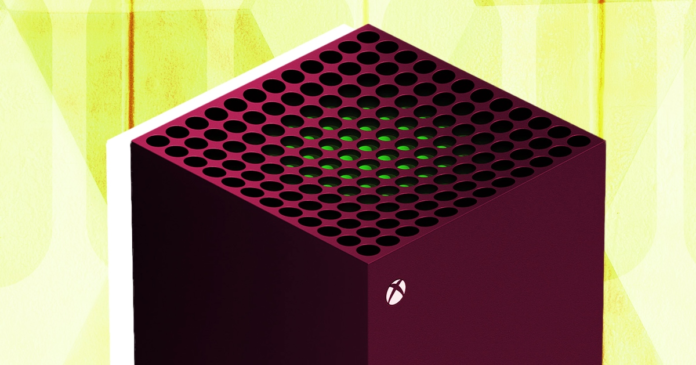The Xbox Series X and Xbox Series S represent Microsoft’s fourth-generation home video game consoles designed around AMD’s 8-Core Zen 2 CPU and Radeon RDNA 2 graphics architecture. The two consoles succeed the Xbox One X and Xbox One S, offering better performance and more power across the board. New features include display resolutions up to 8K, built-in solid-state drives for faster access times, and support for real-time ray tracing.
With two powerful consoles available, it’s important to be aware of how they stack up against one another so you can make the most informed buying decision. Here’s our Xbox Series X and Series S comparison.
Specifications
Xbox Series X Xbox Series S CPU 8 core, AMD Custom Zen 2 CPU @ 3.8GHz 8 core, AMD Custom Zen 2 CPU @ 3.6GHz GPU AMD Custom RDNA 2 @ 1.825GHz w/52 compute units (12.15 TFLOPS) AMD Custom RDNA 2 @ 1.565GHz w/20 compute units (4 TFLOPS) Weight 9.8 lbs 4.25 lbs Memory 12GB GDDR6 10GB GDDR6 Memory bus 320-bit 128-bit Memory bandwidth 560GB/s (10GB), (8GB) 336GB/s 224GB/s (8GB), 56GB/s (2GB) Storage 1TB PCie Gen 4 NVME SSD 512GB PCie Gen 4 NVME SSD AV output HDMI 2.1 in/out, 720p, 1080p, 1440p, 4K, 8K HDMI 2.1 in/out, 720p, 1080p, 1440p, 4K I/O output USB 3.2 X 3, Microsoft Storage Expansion Slot USB 3.2 X 3, Microsoft Storage Expansion Slot Communication Ethernet, Wi-Fi Ethernet, Wi-Fi Controller Updated Xbox 4th Generation Controller Updated Xbox 4th Generation Controller Optical drive 4K UHD Blu-ray N/A 4K Support Yes Yes 8K Support Yes No Price $500 $300 Availability November 10, 2020 November 10, 2020 DT Review 3.5/5 3/5
Hardware
Xbox Series X – A new generation awaits
When it comes to hardware, both home consoles are loaded with technology from AMD, including the company’s 8-Core Zen 2 CPU and custom Radeon RDNA 2 graphics architecture. Speeds differ between the Xbox Series X and Series S CPUs, with the consoles running at 3.8 GHz and 3.6 GHz, respectively.
The most significant difference comes when we take a closer look at the RDNA 2 graphics processors, with the Xbox Series X featuring 56 compute units at 1.825 GHz and the Series S featuring 20 compute-units at 1.565 GHz. The result means that the Xbox Series X can process more data at a time than its Xbox Series S sibling, up to 12.15 TFLOPS versus 4 TFLOPS.
The Xbox Series X receives 16GB of GDDR6 RAM on the memory front, while the Xbox Series S gets a slightly lower 10GB of GDDR6 RAM. Built-in storage on the Xbox Series X is double that of the Series S out of the box, as it features a 1TB NVME SSD versus a 512GB VME SSD. Both units offer USB HDD support and compatibility with Microsoft’s storage expansion card.
The Xbox Series X includes a 4K UHD Blu-ray player, while the Series S opts to go discless this generation to keep costs low. Due to the Xbox Series X’s impressive internal specifications, the hardware race isn’t even close.
Winner: Xbox Series X
Design
Both Xbox Series X and Series S take a minimalist approach when it comes to their designs. The Series X is akin to a tall, thin gaming PC tower. Designed to maximize cooling thanks to what Microsoft calls its “parallel cooling architecture,” the Series X comes in at 5.94 x 5.94 x 11.85 inches. The front of the console features a single white Xbox logo, a vertical Blu-ray drive, a small eject button, a small control pairing button, and a USB Type-A port.
On the back, one finds the standard ports for the Series X, including two USB Type-A ports, an Ethernet jack, an HDMI port, Microsoft’s storage expansion card slot, and a power jack.
The Xbox Series S is a smaller unit with a design that is reminiscent of Microsoft’s Xbox One S design: it is white and flat and features a large, black circular cooling vent. The front of the Series S features the same white Xbox logo as its bigger brother, as well as a USB Type-A port and a control pairing button — notably missing is a disc drive. Altogether, the Xbox Series S is 60% smaller than the Series X.
Given just how elegant and small the Xbox Series S is — and considering its power — it’s easy to prefer it over the more expensive Series X system, at least in terms of design. Sure, the Series X is inoffensive in appearance, but we have to give it to the Series S thanks to taking up little shelf space.
Winner: Xbox Series S
Resolution and frame rate
Both Xbox consoles can output impressive resolutions, offering 720p, 1080p, 1440p, and 4K support. However, the Xbox Series X’s impressive internals begin to shine as the console allows for up to 8K gaming. Microsoft also notes that the Series X has been designed to deliver 4K resolutions at 60 frames per second (fps) up to 120 fps.
In comparison, the Series S has been designed to output 1440p resolutions at 60 fps up to 120 fps. Thus, even though the Xbox Series S supports 4K gaming, you might want to opt for the Xbox Series X if you desire high frame rates consistently. The Xbox Series S is still a powerful little device, however, even with its technically inferior specs when compared to Series X.
Winner: Xbox Series X
Home theater features
When it comes to relaxing in your home theater or den, the Xbox Series X nudges ahead thanks to its inclusion of a 4K Ultra-HD Blu-ray drive that supports standard Blu-ray discs, DVDs, and CDs. The Series S, on the other hand, offers no physical disc slot. And while Xbox Series X can output resolutions of up to 8K, Xbox Series S is limited to a maximum of 4K.
When it comes to audio output, neither console features a digital optical out port, so you are limited to HDMI 2.1. On a positive note, HDMI 2.1 offers support for both audio low-latency mode and variable refresh rate features. Both the Xbox Series X and Series S use a custom Project Acoustics 3D audio engine to handle sound processing.
While the Xbox Series S offers a near-perfect solution for those with a digital library, the Xbox Series X includes greater media compatibility thanks to its internal Ultra HD Blu-ray drive. The ability to support media up to 8K makes Series X feel more future-proof — even if 8K still isn’t widely used yet.
Winner: Xbox Series X
Games and backward compatibility
No matter whether you select the Xbox Series X or Series S, you’ll be able to play the same great games released for Microsoft’s fourth generation of consoles. However, games can be optimized for the Xbox Series X, offering higher frame rates and increased fidelity for a more immersive experience. When purchasing a game from the digital Xbox Store, the Xbox Series X will automatically download the game’s optimized version without users needing to make a distinction. Games optimized for Xbox Series X will bear an easily recognizable green “Optimized for Series X” badge.
Moving to the latest generation of Xbox consoles won’t mean leaving your favorite games behind as both Series X and Series S offer complete backward compatibility for Xbox One titles (excluding those that require the use of the now-defunct Kinect sensor). The new generation of Xbox consoles also supports some Xbox 360 and original Xbox games.
Both Xbox Series X and Series S can play the same games and access the same libraries of backward-compatible games, however, the Xbox Series X’s ability to run games with higher fidelity puts it a step ahead.
Winner: Xbox Series X
Price and availability
the Xbox Series X is available for $500, while the smaller Xbox Series S has a price point of $300. Of course, you do get what you pay for, and the Xbox Series X is certainly worth the price of entry, but it’s easy to see the appeal of the lower cost of the Xbox Series S. For those simply looking to play the occasional game here and there, it’s tough to justify paying $500 for the Series X when the Series S gets the job done.
Winner: Xbox Series S
Overall winner — Xbox Series X
Gamers have a reason to be excited about the Xbox Series X: It offers a cutting-edge gaming experience from Microsoft, delivering games at high resolutions and fast frame rates, with a minimal form factor. Don’t let the Xbox Series S slide out of sight, however; its price point will allow individuals to gain access to the world of Xbox without having to break the bank.
Best of all, no matter which system you select, you’ll enjoy the same games in the end.
Today’s tech news, curated and condensed for your inbox Subscribe Check your inbox! Please provide a valid email address to continue. This email address is currently on file. If you are not receiving newsletters, please check your spam folder. Sorry, an error occurred during subscription. Please try again later.
Editors’ Recommendations




